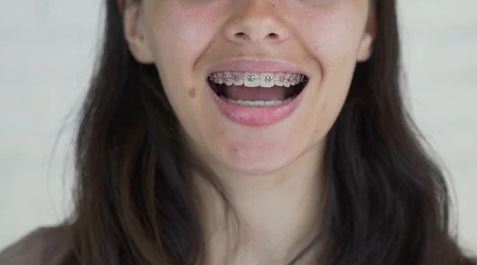Braces Girl Video Navigating the Challenges of Privacy and Sensitivity in Digital Content Sharing
In the digital age, videos can rapidly become viral, capturing widespread attention. Among these, videos labeled as “Braces Girl Video” have gained notoriety, often highlighting individuals, typically young females wearing braces, in various scenarios. These videos can range from innocent public vlogs to more sensitive or private moments unintentionally captured or shared without consent.
The conversation about video privacy and sensitivity is crucial as it encompasses the protection of individuals’ personal and intimate moments from unauthorized dissemination. With the rise of social media platforms, the ease of sharing content can lead to significant privacy breaches. Discussing these topics is vital for fostering a safer online environment and promoting awareness about the consequences of sharing sensitive content without consent.
Content
Background Information
“Braces Girl Video” typically refers to any video content featuring young women or teenagers who wear dental braces. These videos are often characterized by their focus on the braces as a visual element, sometimes highlighting the orthodontic treatment as a part of the individual’s daily life or personal vlogs. However, the term has also been associated with videos that are shared without the filmed subject’s consent, encompassing a range of content from everyday activities to more personal moments.

The popularity of “Braces Girl Videos” can be attributed to the relatable aspect of undergoing orthodontic treatment during teenage years, a common experience for many. These videos often gain traction on social media platforms like YouTube, TikTok, and Instagram, where young audiences seek content that reflects their own experiences and interests. Unfortunately, the same platforms can also facilitate the rapid spread of content that was never meant to be public, challenging the boundaries of privacy and consent.
Content Analysis of the Videos
“Braces Girl Videos” commonly showcase young women engaging in everyday activities such as talking about their daily routines, discussing the experience of wearing braces, or sharing beauty and fashion tips. These videos often highlight the braces not just as a dental appliance but as a part of the vlogger’s identity that affects their speech, eating habits, and self-esteem. They might include close-up shots of the braces, explanations about orthodontic procedures, and discussions about the social and psychological impacts of wearing braces during adolescence.
Braces Girl Video Full HD 1080p Glamorous and Alluring Moments
Several recurring themes appear in these videos. One prominent theme is the transformation journey—where individuals document their orthodontic progress, showcasing before and after results. Another common theme revolves around the ‘braces lifestyle,’ including tips on cleaning braces, what foods to avoid, and how to deal with common issues like pain after adjustments. These videos often serve an educational purpose, helping to demystify orthodontic treatments and provide a sense of community and support to viewers undergoing similar experiences.
Ethical Considerations
While many “Braces Girl Videos” are created with the intent to educate or entertain, there exists a significant privacy concern when videos that were meant to be private are shared publicly without consent. In some cases, videos containing sensitive personal moments or depicting individuals in vulnerable situations have been distributed without the filmed subject’s approval. This unauthorized sharing can lead to privacy violations and has legal implications. It underscores the need for stringent measures to protect individuals’ digital rights and personal integrity in the online realm.

The impact of these videos on the individuals featured can be profound and lasting. For those who willingly share their experiences, the feedback and community interaction can be overwhelmingly positive, providing support and acceptance. However, for individuals who find themselves featured in videos shared without their consent, the consequences can be damaging. They may experience emotional distress, embarrassment, and a breach of trust, which can affect their mental health and social lives. Additionally, there is a risk of cyberbullying, which can exacerbate the situation, leading to severe psychological effects.
Legal Aspects
The legal framework surrounding sensitive content in videos varies significantly across jurisdictions, but common themes include the protection of privacy and the prohibition of non-consensual sharing. In many countries, laws such as the General Data Protection Regulation (GDPR) in the European Union and various state laws in the United States, like the California Consumer Privacy Act (CCPA), provide guidelines and restrictions on how personal data and video content can be collected, shared, and used. Specific laws addressing cyber harassment, revenge porn, and digital privacy are also in place to protect individuals from unauthorized distribution of sensitive video content. These laws often mandate explicit consent for sharing videos that contain personal or sensitive content, especially if the content might lead to public identification of the individual(s) featured without their agreement.
Penalties for unauthorized distribution of sensitive videos can be severe, aiming to deter such behavior and provide remedies to affected individuals. These penalties might include substantial fines, criminal charges, and civil liabilities depending on the severity and nature of the breach. For instance, distributors of non-consensual pornography can face criminal prosecution under laws specifically designed to tackle this issue, resulting in potential imprisonment and registration as sex offenders. The legal consequences are intended to reflect the serious nature of these violations and reinforce the rights of individuals to control their personal and sensitive information.
Case Studies
One notable case involved a teenager in a high school who shared a video of a classmate without her consent, leading to widespread circulation within the school and on social media platforms. The video, which depicted the classmate in a vulnerable situation, not only violated her privacy but also led to severe bullying and distress. Legal action was taken against the individual who initially shared the video, resulting in a court case that emphasized the serious repercussions of sharing sensitive content without consent.
Another case involved a celebrity whose private videos were hacked and distributed online. The legal battles that followed brought to light the extensive damages and intrusion of privacy that such actions can cause, leading to significant settlements intended to compensate for the harm done.

The reactions to these cases often include public outcry and calls for stricter regulations on digital content sharing. The individuals whose videos were shared without their consent typically suffer from public scrutiny, emotional distress, and in some cases, a tarnished reputation which can affect their personal and professional lives. Legal consequences for the perpetrators have varied, ranging from fines and community service to imprisonment, depending on the nature of the offense and the existing legal statutes. These cases serve as crucial examples for understanding the impacts of unauthorized video sharing and the need for comprehensive legal protections.
Prevention and Protection Strategies
Protecting personal videos starts with individual responsibility and the right use of technology. First and foremost, individuals should utilize strong, unique passwords for all devices and online accounts, and enable two-factor authentication where possible to enhance security. It is crucial to maintain physical control over devices that store sensitive content and ensure that these devices are encrypted. Additionally, when sharing videos, individuals should be selective about their audience, using private or encrypted sharing options and verifying that the platforms they use have strong privacy policies and security measures in place.
One effective method to prevent unauthorized access is to use watermarking or adding metadata that indicates ownership and consent parameters directly within the video file. This not only deters theft but also helps in tracing the source of potential unauthorized distributions. Furthermore, individuals should be educated about the legal recourse available to them should their content be mishandled or misused.
Educational campaigns are vital in raising awareness about the risks associated with personal video sharing and the importance of digital privacy. Schools, community centers, and online platforms can play a proactive role by incorporating digital literacy programs that cover topics such as cyber safety, the implications of sharing content online, and the legal protections that guard against privacy breaches. These programs should also emphasize the ethical aspects of sharing digital content, teaching individuals to respect others’ privacy and the consequences of not doing so.
Collaborations between educational sectors, tech companies, and legal bodies can also produce comprehensive resources and workshops that empower users to navigate the digital world responsibly. Awareness campaigns should target all age groups, adapting the message for different audiences to ensure it is both accessible and actionable.
This discussion has explored the multifaceted issues surrounding “Braces Girl Videos,” from their content and popularity to the ethical and legal concerns they raise. We’ve examined how these videos can range from harmless personal expressions to potential sources of privacy violation and legal issues when shared without consent. The importance of ethical considerations, legal frameworks, and case studies has been highlighted to understand the consequences of irresponsible video sharing.
The need for responsible video sharing cannot be overstated. In a world where digital content can be shared globally in seconds, the potential for harm is significant if done carelessly. It is imperative that individuals understand their rights and responsibilities when it comes to digital content. As digital citizens, it is our duty to ensure that our actions online are considerate of our own privacy and that of others. This entails not only practicing safe sharing but also advocating for policies and practices that protect and respect individual privacy. The conversation about responsible video sharing is ongoing and essential, reflecting the evolving challenges and responsibilities we face in the digital age.
Breaking News -SkyLeakss Video Scandal Navigating the Challenges of Digital Privacy and Ethical Boundaries
Leakskilla Video Exposures Navigating the Complex Intersection of Digital Privacy and Public Discourse
Curvyooh Braces Video Navigating Privacy and Exposure in the Digital Age
Taila Maddison Video Navigating the Complexities of Digital Privacy and Content Sharing
Lauren Kim Video Leak Sparks National Debate on Digital Privacy and Ethics
Julieth Diaz Video Scandal Examining the Impact of Digital Privacy Breaches on Public Figures
Ania et Zizou Video Scandal A Case Study on Privacy, Ethics, and Digital Responsibility